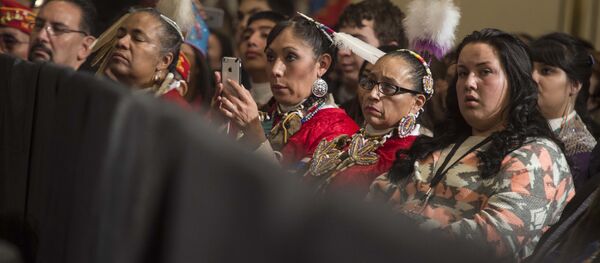WASHINGTON (Sputnik) — Schools for Native Americans in the United States require at least $388 million to be effectively modernized, National Congress of American Indians President Brian Cladoosby told Sputnik.
"Under this infrastructure spending program, if they really wanted to help our children get a running start and have adequate schooling, we need right now a minimum of $388 million to deal with all the infrastructure needs of our Bureau of Indian Education (BIE) schools," Cladoosby said.
Cladoosby noted that in the United States the federal government operates two schools, military and Indian.
"Two years ago, I testified in Congress that the military schools run by the government had an appropriation for new construction of $350 million. The Native American appropriation for new Indian schools is only $250, 000," he pointed out.
Cladoosby said that the high school serving the Makah Tribe in the US state of Washington could not provide its students with broadband.
"The state just made a regulation that all of the testing now has to be done online and so the school tested their online capabilities. It took one student a minute and a half to download one page of that exam," Cladoosby said.
Cladoosby emphasized that the US tribes also have serious medical and dental needs, and even their jails were substandard.
"A large majority of those Native Americans in Alaska do not have indoor plumbing or running water in the 21st century. If you go down to the Navajo Nation you have a community… that does not even have electricity. We have a lot of pipes in the ground that are in desperate need of repair," he explained.
Moreover, Native American communities suffer from inadequate water lines, sewer lines and roads, Cladoosby added.
The United States has 566 federally-recognized Indian Nations, 229 of which are located in Alaska and the rest in 33 other states.
Established in 1944, the National Congress of American Indians is the oldest and largest non-profit organization representing the tribes, and serving interests of tribal governments and communities, according to its website.



